It’s no secret that marketing is hard. After 21 years, I know the pain of working as hard as possible to create marketing assets, pump out blogs, SEO, content marketing, social media and everything else to try to move the needle for your business.
And what is the result?
NOTHING.
We will unpack our unique way of understanding your target audience and the buyer personas that are needed to get the right message to the right client at the right time.
Why your marketing might be failing
The number one reason why companies fail to meet their objectives usually comes down to the fact that they are too broad with their marketing. More importantly, they are developing content about yourself, and not about the buyer, even though in your head, you know better.
There are times when you look back at your marketing materials, and you got it way wrong. I’m sure you have heard 1,000 times to know your buyer.
But if you look at the number of companies who actually put the time and energy into writing it down and putting it into a formal process, those companies are very small. The percentages of companies that get it right are very small.
Unpacking buyer personas
When talking about buyer personas, we are going to focus on how do you strategically develop marketing materials that get the right message to the right client at the right time? You have to have a strategy to reach them and to know who they are.
What we strive to do with our clients, and even with our own marketing, is to try to figure out what we believe an ideal buyer persona looks like.
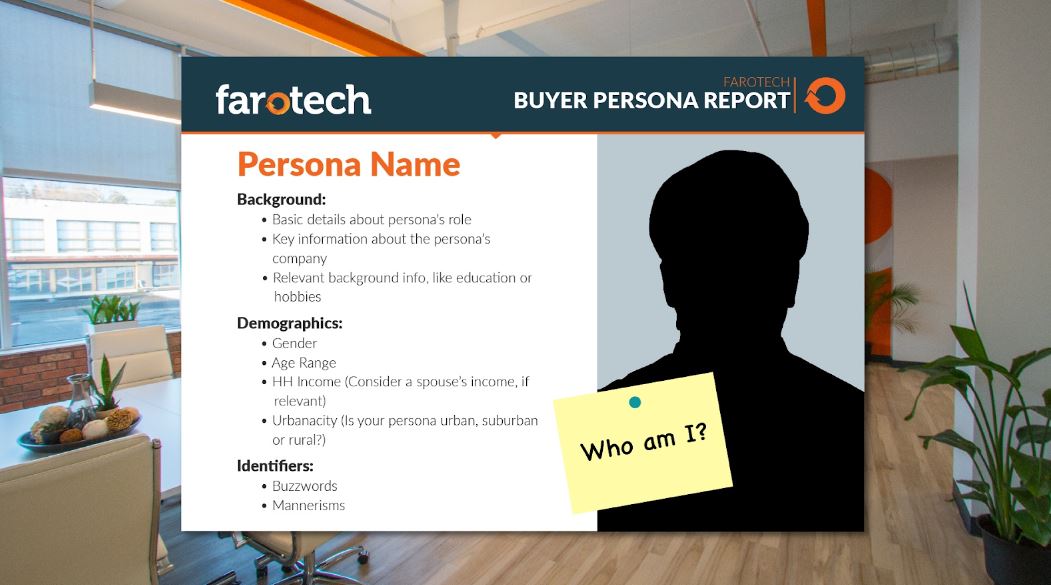
I want to look at their background, demographics, identifiers and market benchmarking software to understand who that target buyer is. You are going to look at everything from behavioral to what they read and look at. Your goal here is to get all of that information down on paper.
One of the things that we also do, which is very unique for most marketing businesses, is that we develop a gap assessment. A gap assessment is a 10 week deep dive into your company’s marketing approach.
In that approach, we take a fine look at who your potential buyers are in each vertical. All of this information needs to have it written down so that you can go back and reference it. The information needed is as follows:
- What are their titles?
- What is the variation of their titles?
- What do they do on a daily basis?
- What are their pain points?
- Who are the stakeholders they report to?
- What are the goals that they need to have? (financially, manpower, product services, etc)
Implementing AI technology to elevate your marketing strategy
Other things that we do is we use AI technology. The AI technology is used as a form of paid advertising by creating 1000s and 1000s of variables of our argument.
Next, we measure how each buyer persona gravitates to a message, so that later on when I have my complete buyer persona, I know who they are, but also what kind of messaging they gravitate towards. This AI software allows you to truly understand who your buyers are if you have the ability to use it.
Having online marketing materials that cater to your target audience by knowing who they are will elevate your marketing and catch your buyer’s attention.
Rothman First Marketing Campaign
Other things that we do in the beginning is develop a wide net approach. In this example, this is one of our clients that we did the digital strategy for nearly a decade. Rothman Orthopedics is world class in the field of orthopedics and based out of Philadelphia.

They had a campaign that was called Rothman First, which basically means that if anybody had any pain in their knees, hips, spine or anything like that, they would think of Rothman Rothman as their first choice to go to for care. Rothman recognized that they needed to create marketing materials that everyone who has pain in those, you know, those regions will think of Rothman first.
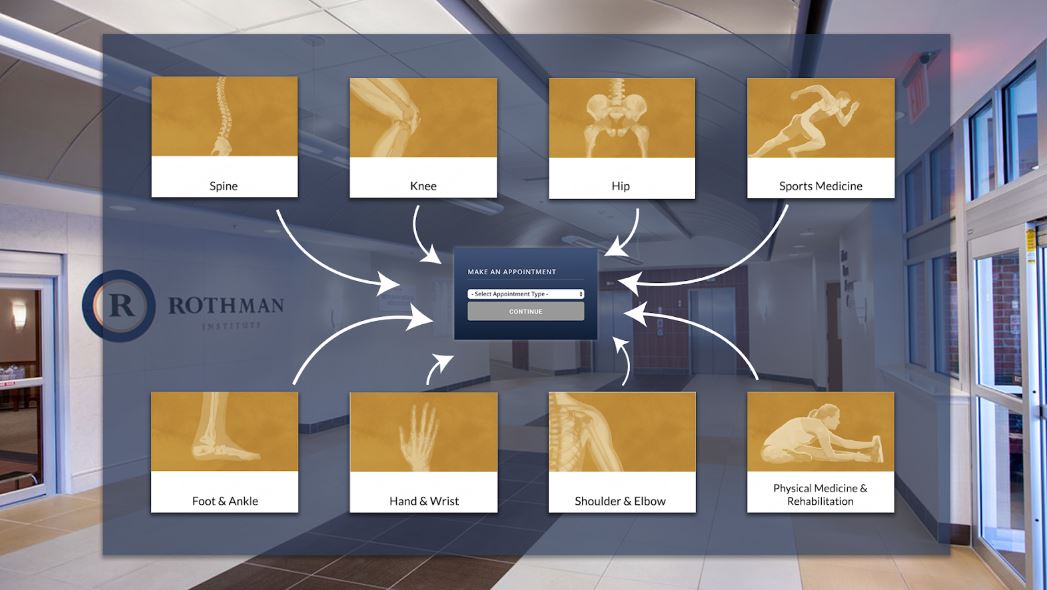
What we wanted to do at Farotech was to develop marketing campaigns to go after one community at a time and to not attract one patient at a time.
In the Philadelphia area, cycling is a really big thing. In fact, about 100 yards from the Farotech office is a bike trail that goes from the city of Philadelphia, all the way to the middle of the state of Pennsylvania.
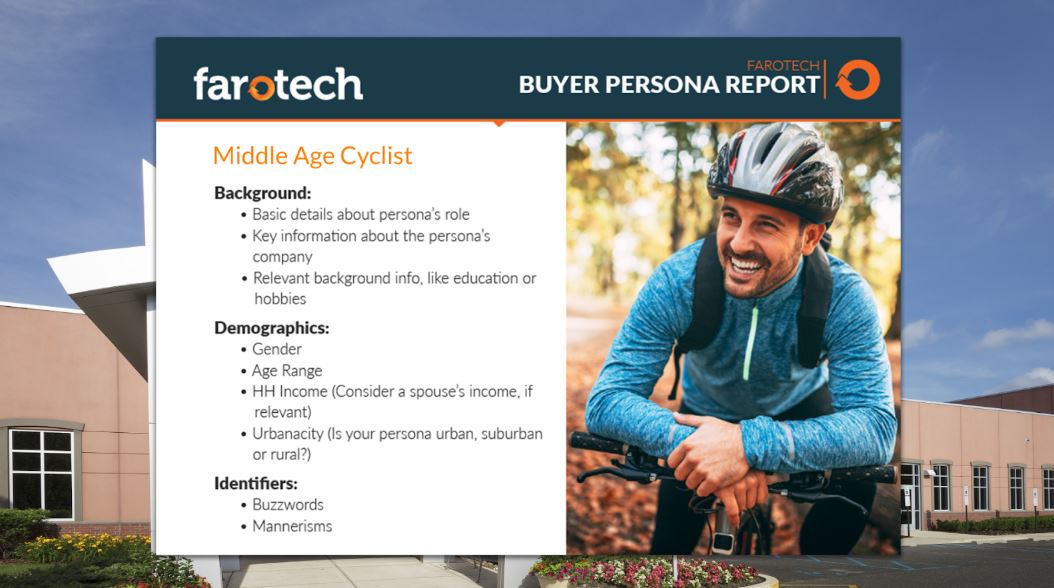
After we developed the wide net approach for Rothman, then we started to go after the buyer persona specific approach. We had to figure out how to find these communities and who the ideal community to go after was.
Now, let’s pretend I’m Bob Smith. You’re not gonna be able to look at my social media profile and see that I have back pain. You might be able to get some of the details about who I am and see my family pictures, but you’re never going to really get down to the fact that I had back pain.
What we did was start to find sports that have chronic pain. We then had to figure out how to start to target those groups, those communities. When I get into a couple of communities you could find the key stakeholders in those communities. They’re going to become my brand ambassadors.
Brand ambassadors are the advocates and raving fans of Rothman. When I start to treat one or two people in the community and other people that have that kind of pain, they’re going to talk to each other about where they go to treat their pain. That’s how word of mouth marketing essentially spreads.
The reason why we picked cyclists is because they have chronic pain over time. They also hurt themselves quite a bit. This makes them susceptible to shoulder pain, hip pain, knee pain, etc.

Targeting key influencers from target’s life
We also created marketing materials for influencers in their life. The joke is that for every cyclist with a bad back, there’s a wife who’s tired of hearing about it. In this approach we did not only go after a cyclist, but also go after their spouses as well.
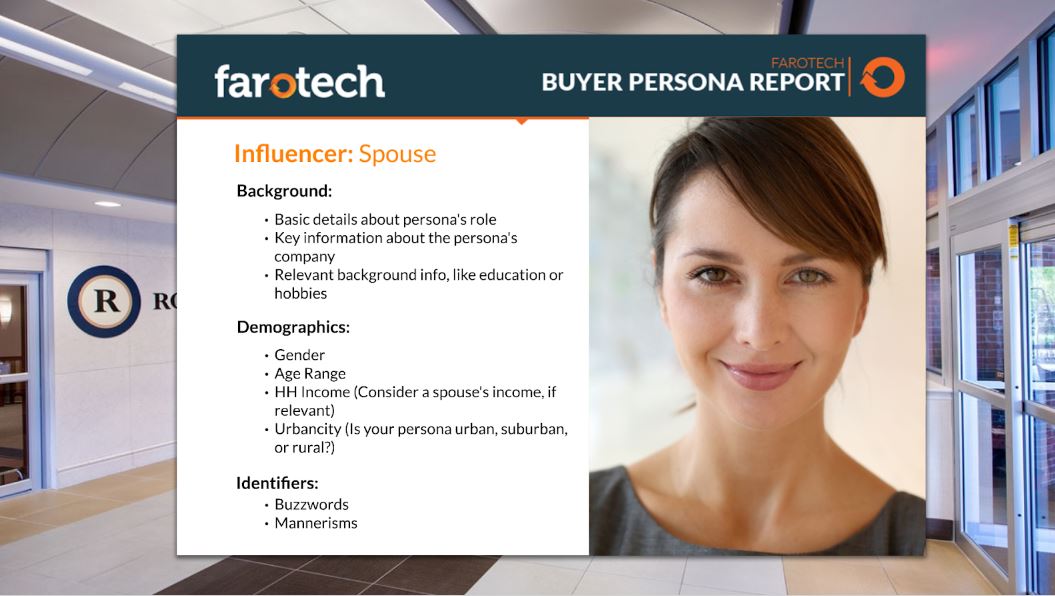
This plan works for B2C and B2B. You can reach out and try to understand the buyer personas for CEOs, but then also for an office manager, or people that they’re delegating work to.
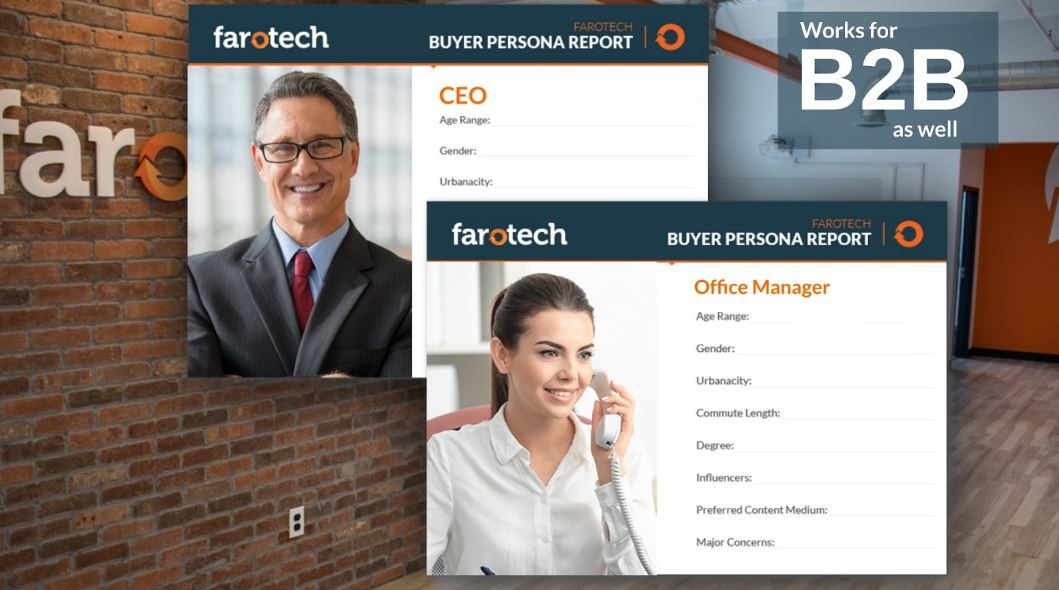
In this cycling story example, once I know who the buyer persona is, I take the time to develop buyer personas and specific marketing materials.

So this is a cyclist guide to managing back pain. These are articles written on their blog about cycling and back pain. By doing this, you are hyper targeting our messaging to these specific groups.
80/20 offers
But what I develop here is educational materials that have been made for the next targeted community. This book is for cycling, but the next book will be whatever the next community that is targeted. This is what we call 80/20 offers.
80/20 offers means that 80% of that content produced is most likely going to be the same for every single community. You will marry the 80% content with the 20% of hyper personalized content.
The variable from each offer is only changing 20% to be personalized to that community. You are creating one really good piece of content, and then you are changing the shell and the messaging that is hyper personalized for each one of these other offers.
Developing messaging that suits your target market
The messaging that you develop for a high school student athlete is going to be very different than for an active 40 year old male. And it’d be very different messaging than for a senior citizen.
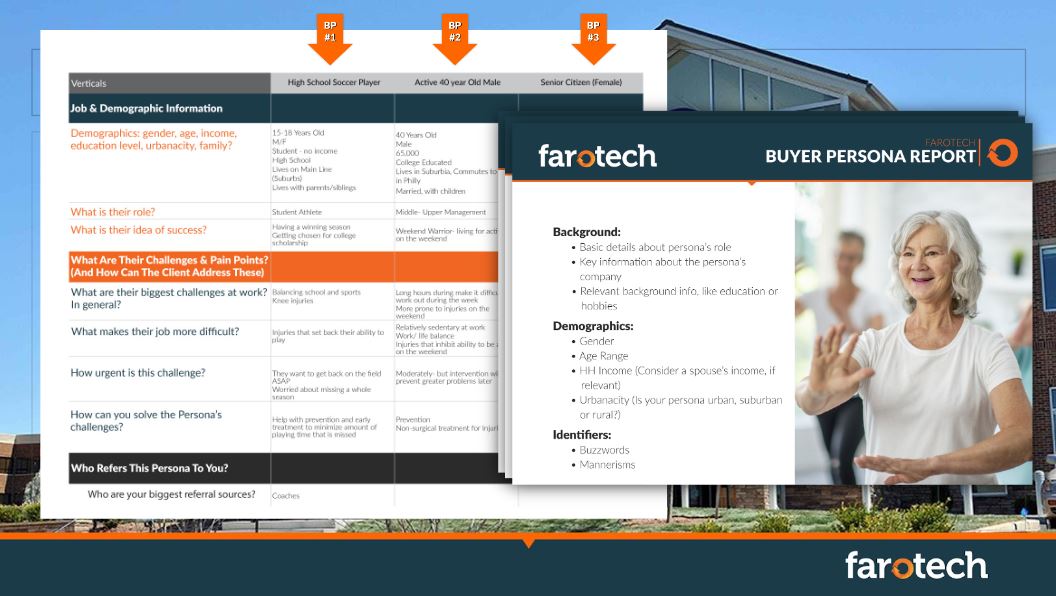
Another reason why most companies fail is they conduct unsegmented marketing. You could have a torn ACL and get marketing messaging about your spine center. If you have a torn ACL, chances are you don’t care about the spine center at this time. By doing this as the marketer, you can risk having disappointed customers who do not have the resources they need. That’s what we call unsegmented marketing.
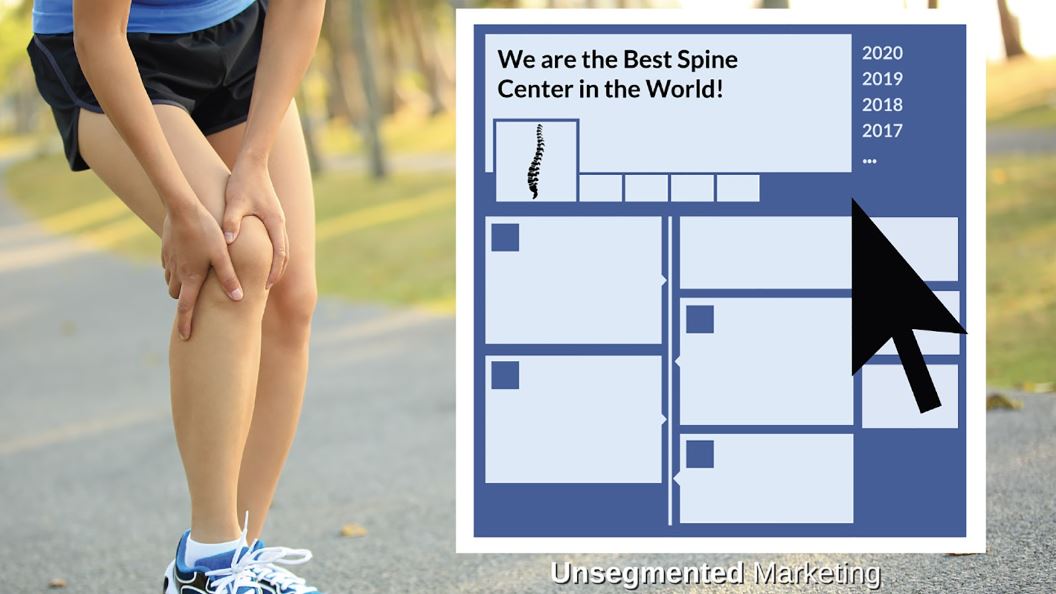
9 times out of 10, there are limited marketing resources. What they will do is take all of their energy and put it into one push no matter the audience’s needs, instead of segmenting, hyper personalizing, and getting the right message to the right client at the right time.
Now, if you have the same torn ACL, and are getting messaging about “The five things to understand when you are considering knee surgery”, that is getting the right message to the right client, at the right time.
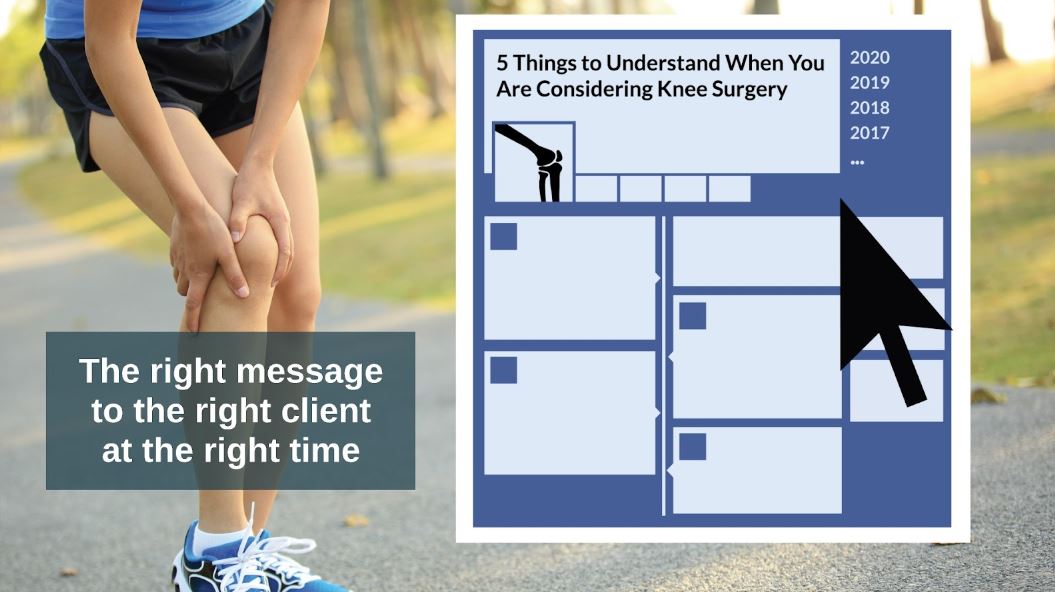
None of this should feel like rocket science, but very few companies are doing this. We know what it’s like to develop really strong messaging and think that your team will develop all of this time and energy, so why would we only give it to a small part of my database? The 10 times of work that you do up front, can sometimes yield 100 fold when you segment.
I have a good friend that says the riches are in the niches. You should really try to focus on that, rather than trying to figure out how to get a broad message and trying to be all things to all people. Hitting your target market with the right messaging at the right time is what makes you successfully market to potential customers.
Let’s try to take it down and get as narrow as possible with hyper specific messengers. Hyper specific messaging that is as empathetic as possible, knows their pain points, to know the promise that you can fulfill for them some proof that you’ve done this a number of different times, and the opportunity, which is communicating that if you’re looking to take the first step, how can I guide you through that process?
Chicken Soup for the Marketers Soul
Who’s the king? Well, the king is Jack Canfield. So I don’t know whether these books are as popular if you’re in your 20s as they were when I was in my 20s, but this book was wildly successful. The first book that came out was called Chicken Soup for the Soul. Essentially, it is a book about a collection of short stories.

My hunch is that he could have had a best selling book with that, and then might have been able to get one or two more out before you know the concept faded and people just forgot about it. But where Jack Canfield was really smart, is that he decided to make short stories that were hyper personalized, for each buyer persona, or each target audience, or in this case, each reader.
So ask yourself, would you read Chicken Soup for the Fireman Soul? Well, maybe if you’re a fireman. I know that my mom gave me Chicken Soup for the Soccer Player. So when I read that, when I played soccer, that was what I gravitated towards because that’s what I loved. I felt like the book was written specifically for me.
He took this idea, broke it down into each of the buyer personas and crafted them so that they were hyper specialized to the reader. That is why his book series sold over 250 titles that sold over 110 million copies in the United States and Canada. And it’s in 43 different languages in over 100 countries. They sold over 500 million copies worldwide. That’s what the king looks like!
You should think that that’s the type of approach that I should do in my marketing, by creating a really strong message that’s the wider net then hyper personalized for each of my target personas, then create very specific marketing on my website and sometimes on my marketing. If you keep it broad, you will fail.
All that we covered
We looked at the importance of taking the time to know your buyer personas, we also talked about how to start with a wide net approach, and strategically become narrow on purpose. We also talked about the art and science of getting the right message to the right client at the right time. Following these rules of the road can help to elevate your marketing campaigns.
So I hope that you found this valuable, it is our goal to bring as much value as possible.Please contact uswith any questions or concerns. We look forward to hearing from you!




